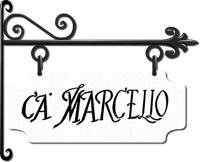A morning in Venice
We always try to write about the beauties of our territory that goes beyond Venice. This does not mean that we do not like our beautiful lagoon city.
We propose a walk to Cannaregio, outside the crowding of Strada Nova.
Arriving in Venice
Bus is the ideal way to reach Venice to take this suggested itinerary. You arrive in Piazzale Roma which is our starting point.
After having made the Ponte della Costituzione (known to us as “Calatrava”), we head towards the crowded Lista di Spagna. It is necessary to follow it up to Ponte delle Guglie (which owes its name to the four stone spiers placed at its extremities). Before the bridge turn left.
Our itinerary begins here.
From Ponte delle Guglie to the Ventian Ghetto
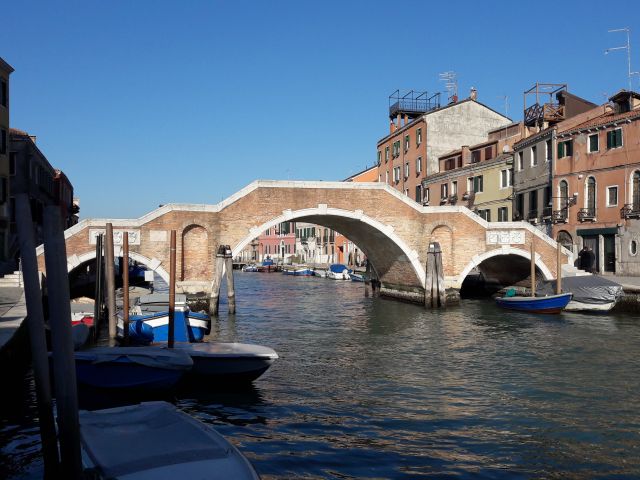
Ponte Tre Archi
The day comes with a thick fog, and Venice has a certain charm on days like this.
(Some pics of this post are with the sun because taken at other times of this year).
We walk all the fondamenta along the Canale di Cannaregio, second in importance only to the Grand Canal.
We reach the ponte Tre Archi (the only bridge with three arches in the whole of Venice), where the canal widens to flow into the Lagoon. If you want to stop and eat something, this is the right area.
After the ponte Tre Archi, turn right to head towards the Ghetto.
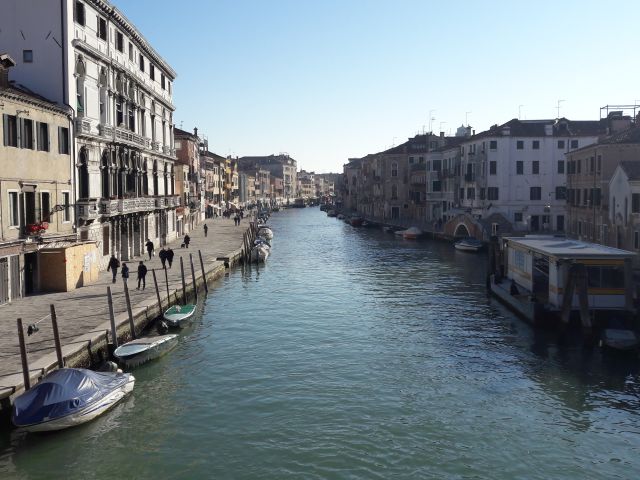
Vista sul Canal di Cannaregio
Along the Fondamenta Canareggio we find several palaces, including Palazzo Surian Bellotto, home of the French embassy, where Jean Jacques Rousseau also stayed.
We reach the Ghetto passing through the sottoportego that leads to the Ghetto Vecchio.
This Jewish quarter was established by order of the Venetian court (the Lordship) in 1527 and is still inhabited by the Jewish community.
Along the street you can already hear the perfumes of the bakery where you can buy unleavened bread and some typical specialties of Jewish culture. Walking you already find some synagogues: the Spanish and Levantine.
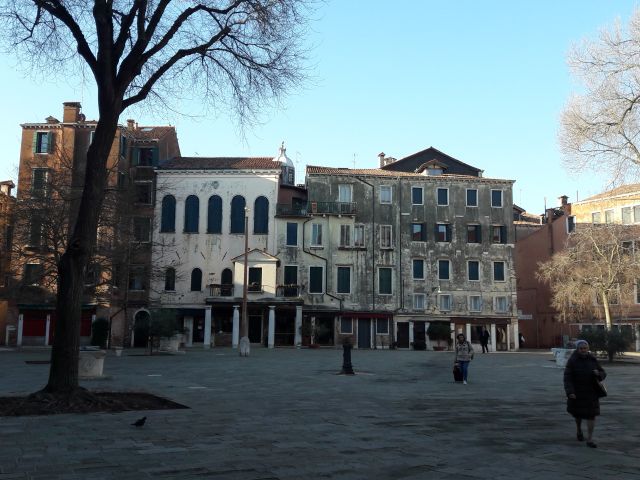
Ghetto Nuovo
After the bridge, you arrive at Ghetto Nuovo, where there is also the museum, which visit includes that of the synagogues. In this part of the ghetto there are the Italian, the German and the Canton synagogues.
In the ghetto, the houses are much higher than the average of the city: once the ghetto was a closed quarter, it was necessary to exploit the space in height as much as possible.
From Ghetto to Strada Nuova
Leaving the ghetto across the bridge, keep to the right, along part of fondamenta degli Ormesini, another part of Venice full of bars and several small shops.
We turn to Calle della Malvasia. Cross the bridge and turn right to head towards Campo dei Mori.
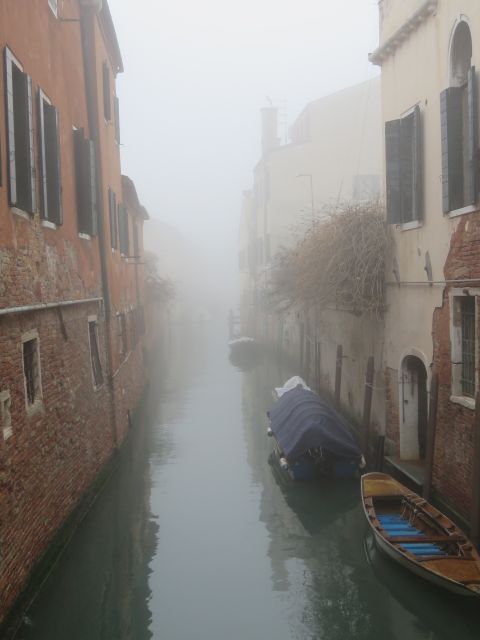
Dal ponte di Calle Malvasia
At Campo dei Mori you will notice four statues inserted in the building: three on one side and one on the canal side (to the right of which is Tintoretto’s house).

Uno dei Mori
There is a legend concerning the Mori: they were merchants (Antonio Rioba and his brothers) who had sent to ruin many people with their dishonesty.
One evening a woman asked them to buy some cloths for her shop. She had little money and had to reopen the shop after the death of her husband. The brothers tried to cheat her and for this they were transformed into statues. The woman was Santa Maria Maddalena who had put them to the test. Merchants transformed into statues were placed on the outside perimeter of the house where they lived.

Vista su Fondamenta Gasparo Contarini
We continue the walk by slipping into the calle and reaching the Church of the Madonna dell’Orto. Have a stop here: inside it is very beautiful.
From here we continue to the right after the bridge, leaving the church behind us. We walk to the end of the Fondamenta.
We take the bridge and follow Corte Vecchia. We turn left and arrive in the Misericordia area.
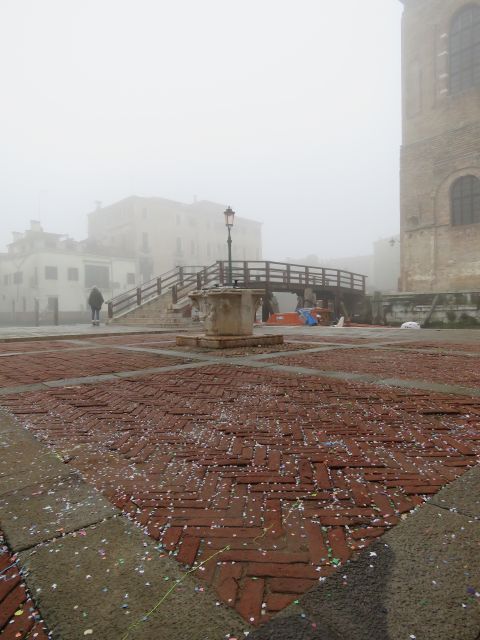
Campo de l’Abazia
We cross the bridge and in front of us we find Ponte Chiodo: the only bridge in Venice (together with the Ponte del Diavolo of Torcello) without parapets, as were all the bridges of Venice until the mid-1800s.
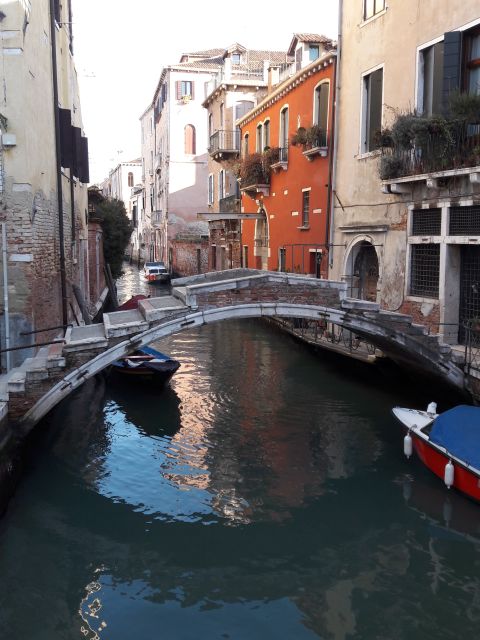
Ponte Chiodo
From here we reach Strada Nuova and a little further, on the right, there is Calle Ca’ d’Oro.
You can choose to visit Ca’ d’Oro, or go back for the same way you came, or walk along Strada Nova, or you can take the vaporetto back to Piazzale Roma.
The guides recommended by us, to visit Venice
To visit Venice beyond the most visited places, here are some very particular guides:
- Corto Sconto (Hugo Pratt, Guido Fuga, Lele Vianello).
Guide divided into seven itineraries, full of practical advice, with little visited places, short courts, legends …
The itinerary “Porta d’Oriente” is the one to which we were inspired of. - The red guide of Touring Club Italiano.
The most complete guide, proposing also many alternatives itineraries. - Venetian legends and ghost stories. A guide to the places of mystery in Venice. (Alberto Toso Fei).
A very special guide, to discover the legends linked to many places in Venice. - Miniguide for great travelers. Walking around Venice (Maria Gianola).
A well done guide for children.
